Prada Accused of Cultural Appropriation: Kolhapuri Artisans Demand Recognition for Traditional Sandals
Prada Faces Backlash: Kolhapuri Artisans Allege Design Plagiarism
In a striking turn of events, the traditional heartland of Kolhapur, renowned for its exquisite hand-crafted leather footwear, has become the epicenter of a global controversy. Thousands of local artisans, custodians of the centuries-old Kolhapuri sandal-making tradition, are raising their voices in unison, accusing the globally acclaimed luxury fashion house, Prada, of illicitly appropriating their distinctive designs without granting due credit or compensation.
The rhythmic cadence of hammers striking leather in workshops like that of 58-year-old Sadashiv Sanake, a third-generation artisan, tells a story of dedication and relentless hard work. “I learned this craft from my father, just as he learned it from his,” Sanake shares, his hands expertly shaping the leather. A single day’s labor yields only eight to ten pairs of these iconic sandals, which typically retail for a modest $8-$10. This starkly contrasts with the high-fashion market, where similar designs, when replicated by global brands, can command prices in the hundreds, if not thousands, of dollars. The question echoing through the artisan community is a poignant one: “Do they have gold in them?”
The Kolhapuri footwear industry, once a thriving cottage industry, now supports barely 5,000 artisans. Many grapple with challenging working conditions, meager wages, and the pervasive struggle to compete in an increasingly mechanized world. This precarious existence makes the alleged plagiarism by Prada even more galling for the community.
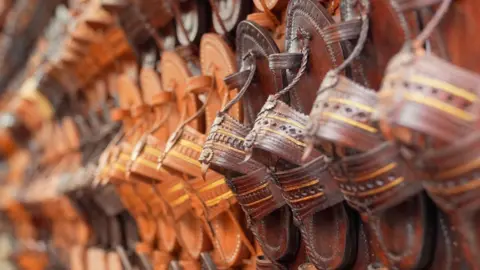
The controversy ignited when Prada unveiled a new collection featuring footwear with a striking resemblance to the traditional Kolhapuri design. The omission of any acknowledgment of the Indian origins sparked immediate outrage on social media, with widespread accusations of cultural appropriation. Prada, in response to the mounting pressure, issued a statement acknowledging the roots of the sandals, a move that has been met with cautious optimism by the artisans.
Local political figures and industry associations have rallied behind the artisans, advocating for greater recognition of their craft and cultural legacy. The historical significance of the Kolhapuri sandal is profound, with its earliest records tracing back to the 12th century. Initially crafted by the marginalized Charmakar (cobbler) community, the craft received a significant boost in the early 20th century when the ruler of Kolhapur, Chhatrapati Shahu Maharaj, provided royal patronage, elevating the status of the artisans.
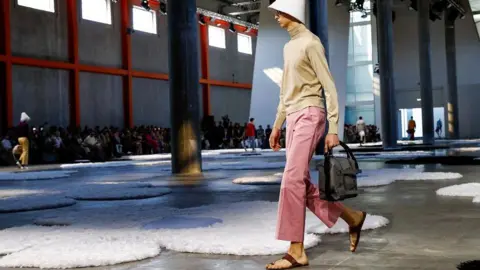
Today, the Kolhapuri sandal industry is a significant economic contributor, valued at over $200 million, employing nearly 100,000 artisans across India. However, for many, the working conditions remain rudimentary. Women artisans, who often meticulously engrave intricate patterns, face particularly unfair compensation for their long hours. Sunita Satpute, a 60-year-old artisan, laments, “I was never educated. This is all I know, and I earn about $4-5 a day.” Her children, like many others, are hesitant to continue the craft due to these hardships.
Adding to the artisans’ challenges are rising material costs and competition from synthetic imitations. The increased expense of traditional buffalo and cow leather, partly due to stricter regulations and vigilantism surrounding cow slaughter in India, has further squeezed profit margins. Sellers in Kolhapur’s famed “sandal lane” struggle to compete, as customers often prioritize lower prices over authenticity.
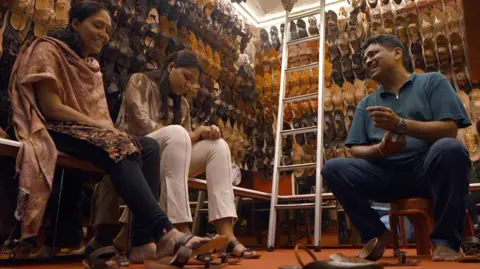
This incident is not an isolated one; many global fashion brands have previously been accused of leveraging Indian handicrafts and textiles without proper attribution or collaboration. Styles like Chikankari embroidery and Ikat dyeing techniques have been widely used, often leaving the original artisans in obscurity while brands capitalize on their creativity.
Experts stress the need for robust frameworks to protect artisans’ rights. While India has awarded Kolhapuri sandals a Geographical Indication (GI) tag, which offers protection within the country, international protection remains a complex challenge. Legal experts suggest avenues like the World Trade Organization’s TRIPS agreement, but enforcement is often cumbersome and costly. In response, the Maharashtra Chamber of Commerce, Industry & Agriculture (MACCIA) is exploring patenting the Kolhapuri sandal design to set a legal precedent.
Industry leaders like Ritu Beri, a renowned designer, emphasize the importance of cultural pride and ethical recognition, advocating for royalty-sharing and co-branding initiatives. “The more we take pride in our culture, the less we will be exploited,” she states.
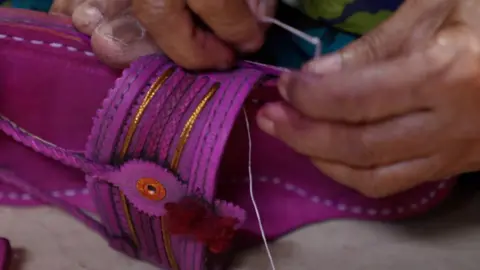
Ironically, the controversy has also brought unexpected benefits. Orders for Kolhapuri sandals have surged, with clients from international markets like Dubai, the US, and Qatar showing increased interest. “The design Prada used wasn’t even very popular, but now people are asking for it,” notes Rohit Balkrishna Gavali, a Kolhapur sandal seller. While this attention is welcomed, the artisans hope it translates into genuine respect and improved livelihoods.
The legal battle continues, with a high court plea demanding damages and compensation from Prada, alongside a call for a court-supervised collaboration between the brand and artisan associations. Prada has confirmed ongoing discussions with MACCIA, with a pivotal meeting scheduled for the upcoming week, signaling a potential pathway toward resolution and fairer practices in the global fashion industry.
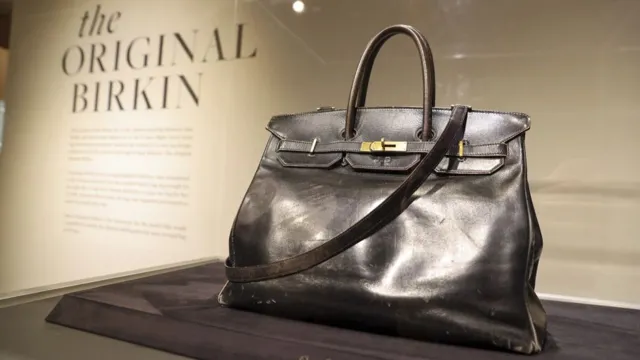
Post Comment